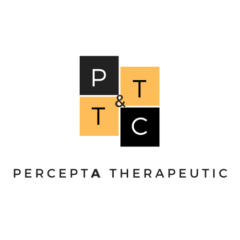The following is the first of a new interview series; “PerceptAInterviews.” PerceptA will be conducting a series of interviews with professionals from a variety of backgrounds, for the benefit of all students in need of guidance regarding their own professional path.
Our first interview is with Dr. Beth Gonzalez-Dolginko.

Beth Gonzalez-Dolginko, EdD, LCAT, LP has worked clinically as an art therapist for 40 years, in academia for 28 years and in private practice for 36 years. Beth has worked with children and adults in the areas of psychiatry, addictions, aging, PTSD, chronic illness, special education, developmental disabilities and child development. Beth currently serves on the New York State Office of the Professions for Mental Health Practitioners Board.
1. What drew you to become an art therapist and how did you become interested in the profession? Share some of your background.
When I was a teenager, I was interested in art and psychology, so I used to say I wanted to be an art therapist, even before I actually knew it was a profession. I have been working clinically for 40 years, both in private practice and institutions, in: in-patient psychiatry, with PTSD, with developmental disabilities, with the medically ill, in special education, in child development, with aging and with addictions issues. I have also taught art therapy on both the undergraduate and graduate levels for 28 years.
2. Where did you earn your PhD/EdD? What made you pick that school and what was your experience like.
My EdD is in Foundations, Leadership and Policy Studies in Education Administration. Honestly, I needed only my Master’s in art therapy for my NYS license. I earned a doctorate because I was a professor on a full-time tenure track at Hofstra University and was required to get my doctorate. I earned it at Hofstra because I got tuition remission, and I was right there.
3. What is your area of expertise?
My areas of expertise as both an art therapist and psychoanalyst are psychiatry and child development.
4. How did your education get you where you are now?
Again, I needed only my Master’s in art therapy for my NYS license. My Master’s in Art Therapy, getting my ATR-BC and my license are what has served my professional path.
5. What benefits have you had since earning your PhD?
None, really. I am on a NYS Board for Mental Health Practitioners, and there is some recognition from them but not really in terms of my practice. The knowledge of how to engage in meaningful research and write professionally is probably the best outcome of earning my doctorate.
6. What advice would you give the future generation of art therapists about what is important in the field?
It is important to stay current with trends in the field of psychotherapeutic treatment and engage in research related to these fields. The more research and publications that exist related to art therapy, the more credibility our profession will have. It is also important to work towards licensure in your home state. We finally got it in NYS. It has not necessarily increased our salaries, but it has given us more credibility and visibility.
7. In regards to picking a graduate school and choosing a program to suit their needs, what advice would you give to art therapists?
It is important to do your homework and pick a program that matches your philosophy and personality. Look at where their internship placements are. Definitely, do a face-to-face interview with the program director or other faculty members, and ask plenty of questions. You should interview them, too. The location might be an important consideration, as well.
Read the entire interview with Dr. Gonzalez-Dolginko here…
If you want to be part of the PerceptAInterviews series, please send your request to dr.c.anah@gmail.com

